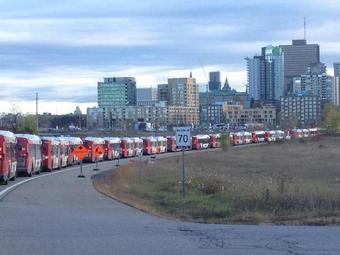The impression I got in the 1980s, was that the bus tunnel(s) was a medium-term plan to replace the on-street running between the two grade-seperated legs. With the intent for long-term conversion to LRT if the demand required that.
The impression I get, is that without the through connections from the bus routes into downtown, and with post-Covid, is that the bus capacity was too stretched, so they went for LRT. But with LRT demand has reduced, and they'd have been better off with buses.
Ultimately, significantly improving the LRT frequency and travel time, along with better connections to buses would I think be the solution. I haven't seen any of the stations since they built the LRT, so I don't know how well integrated they are any more. Hopefully better than the GO and TTC integration at Kipling!






